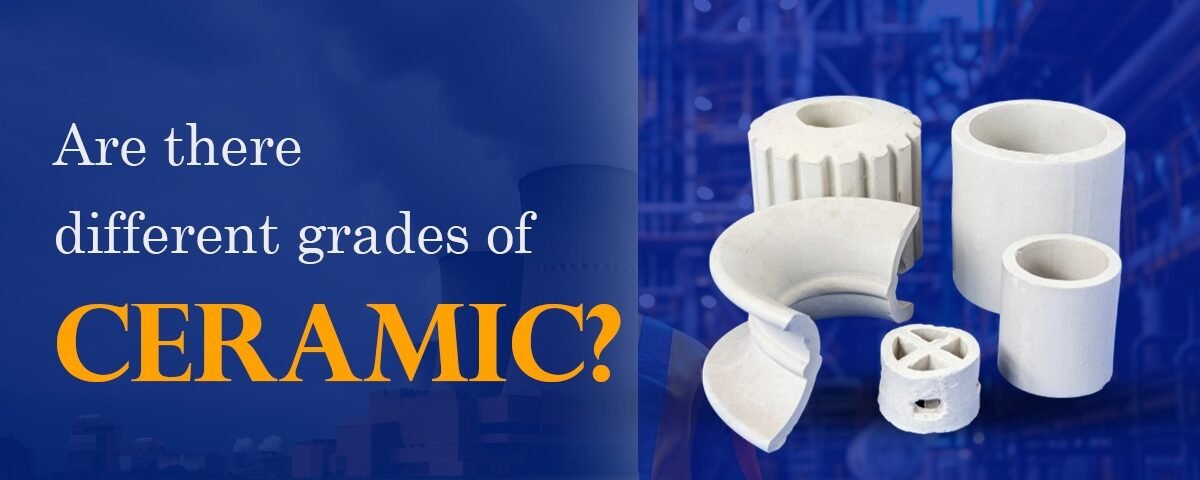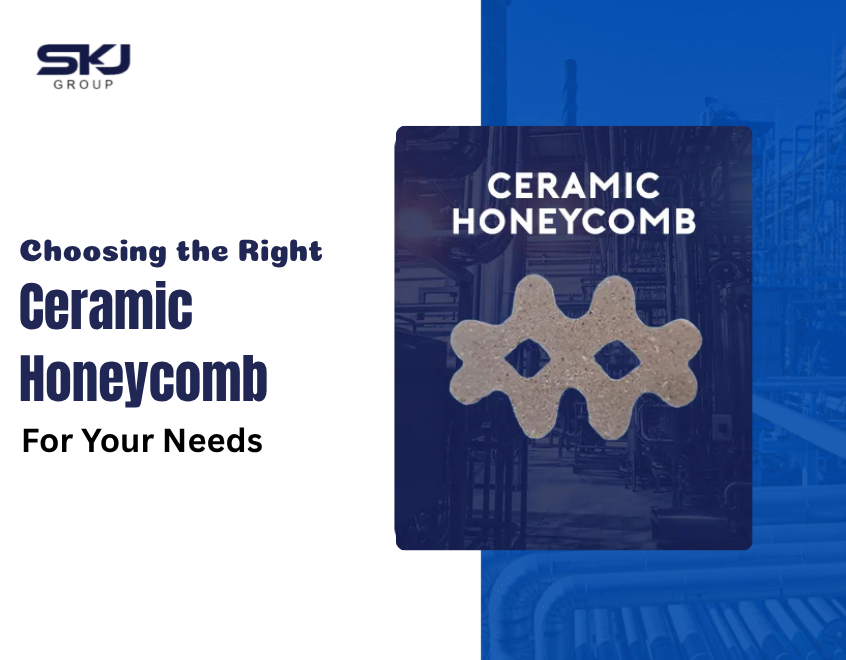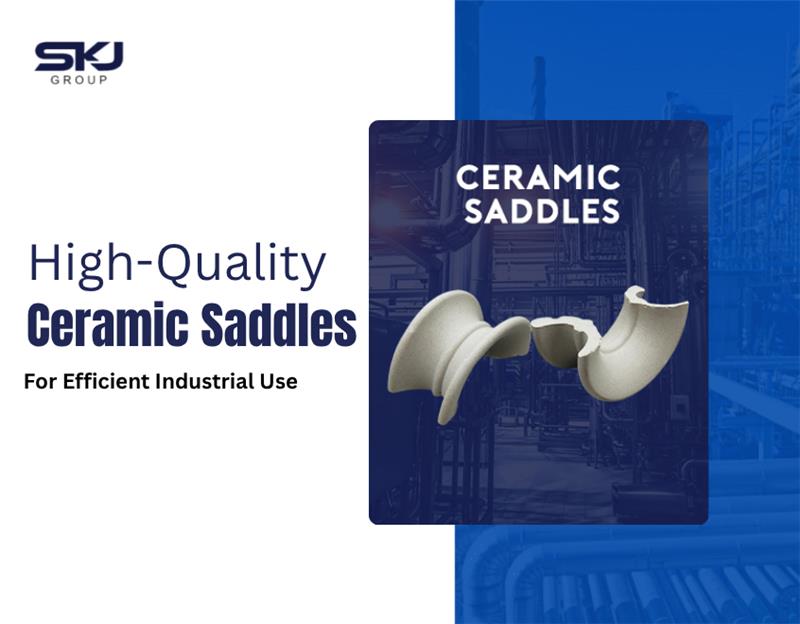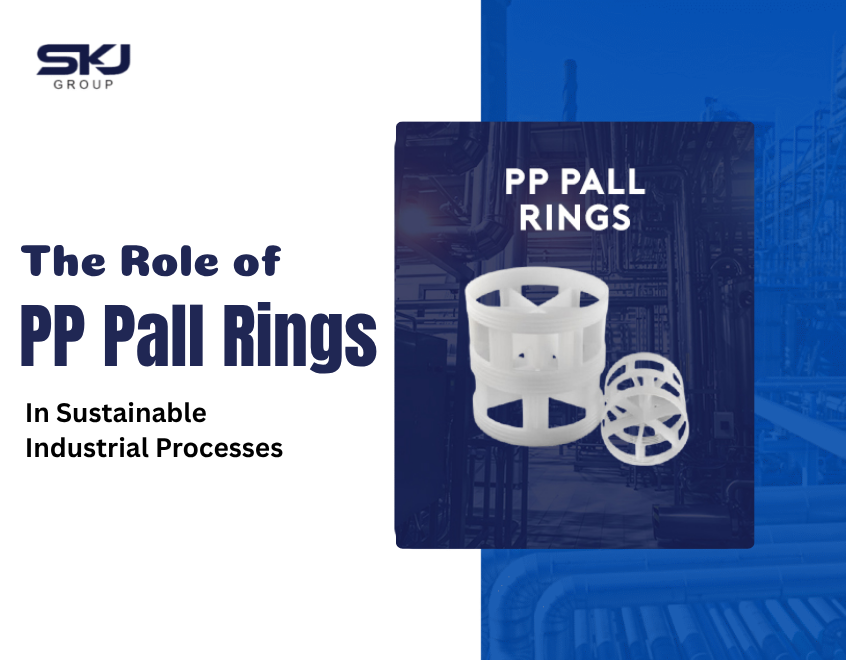Are there different grades of ceramic?

Common Challenges in Tower Packing Applications and How to Overcome Them
August 15, 2024
How Ceramic Saddles’ Structure Enhances Performance in Chemical Engineering
October 10, 2024Introduction: The Importance of Ceramic Grades in Industrial Applications
Have you ever wondered why certain ceramic materials are used in one industrial process, while a completely different ceramic is preferred for another? The answer lies in the grade of the ceramic. From Performance Ceramic Saddles to specialised Inert Ceramic Balls, the grade of ceramic you choose can impact everything from durability to thermal resistance.
In industries such as chemical processing, filtration, and manufacturing, selecting the right ceramic grade is crucial for ensuring efficient operations and long-lasting equipment. This guide will explain the different grades of ceramic, what factors determine these grades, and how you can choose the right one for your specific application. Whether you are sourcing Ceramic Saddles from a manufacturer or looking for the best Pall Rings in Mandsaur, understanding ceramic grades will help you make informed decisions.
Definition of Ceramic
Ceramics are non-metallic, inorganic materials that are widely used in industries due to their resistance to heat, corrosion, and wear. They can be found in products ranging from Alumina Balls to Ceramic Saddles used in packing towers. The composition of ceramic materials typically includes clay, silica, and other elements that are processed and fired at Temperatures to achieve their characteristic properties.
In the industrial sector, ceramics play an essential role in filtration, chemical processing, and mechanical applications. From High Alumina Ceramic Balls used in catalytic converters to Cecebe HP Porcelain Saddles for filtration systems, these materials provide the durability and heat resistance necessary for demanding environments.
Different Grades of Ceramic
Ceramics are classified into different grades based on their material composition, manufacturing processes, and quality control standards. These grades determine the performance and durability of the ceramic in various applications. The three main grades of ceramic are:
- Grade 1 Ceramic
- Grade 2 Ceramic
- Grade 3 Ceramic
Each grade offers different levels of strength, porosity, and resistance to heat and corrosion. Let’s explore what each grade entails and its respective applications.
Grade 1 Ceramic
Grade 1 ceramic is the ceramic available, often used in environments that require exceptional durabilityand resistance to heat and chemicals. This grade is characterised by its low porosity, high density, and outstanding mechanical strength, making it ideal for demanding industrial applications.
Characteristics:
- Extremely low porosity
- Resistance to heat and corrosion
- Superior mechanical strength
Applications:
- Ceramic Super Intalox Saddles: Widely used in chemical processing towers for efficient mass transfer.
- High Alumina Ceramic Balls: Ideal for catalytic reactions and filtration processes that require high resistance to wear and thermal shock.
- Inert Ceramic Balls: Commonly used in petroleum refining and petrochemical industries.
Industries that require top-tier materials often choose Grade 1 ceramics for their Performance. For example, Cecebe HP Porcelain Saddles used in filtration and Pall Rings in absorption towers are commonly manufactured using Grade 1 ceramic for their robustness.
Grade 2 Ceramic
Grade 2 ceramic offers a balance between cost and performance, providing good resistance to heat and moderate strength while remaining more affordable than Grade 1 ceramic. It’s suitable for industrial environments that don’t require the extreme durability offered by Grade 1 but still need reliable, materials.
Characteristics:
- Moderate porosity
- Good heat resistance
- Cost-effective option for many industrial applications
Applications:
- PP Pall Rings: Used in absorption and scrubbing processes in industries like oil and gas.
- Ceramic Saddles: Employed in distillation and filtration systems that don’t require materials.
Industries where cost control is a key factor, but performance is still important, often opt for Grade 2 ceramic. For instance, Ceramic Saddles manufacturers may use Grade 2 ceramic in less demanding applications where the operational environment doesn’t expose materials to extreme stress.
Grade 3 Ceramic
Grade 3 ceramic is the most economical option and is typically used in applications where the material’s heat and corrosion resistance are not critical. This grade has porosity and lower mechanical strength, making it suitable for low-stress environments.
Characteristics:
- Porosity
- Lower durability
- Most cost-effective option
Applications:
- Ceramic Rings: Used in non-critical filtration systems.
- PP Saddles: Suitable for low-impact industrial applications, such as light chemical processing.
While Grade 3 ceramic is less durable, it remains a popular choice for applications that don’t demand high levels of heat or chemical resistance. For example, Ceramic Rings used in basic filtration systems or low-temperature operations often utilise Grade 3 ceramics to reduce costs.
Factors Affecting Ceramic Grades
Several factors influence the grading of ceramics, including the material composition, manufacturing process, and the quality control standards adhered to during production. Understanding these factors will give you a clearer idea of why certain ceramics perform better than others and are priced accordingly.
Material Composition
The types of raw materials used to create ceramic products—such as clay, silica, and alumina—have a significant impact on the final grade. Materials with fewer impurities typically result in higher-grade ceramics, such as High Alumina Ceramic Balls, which are valued for their purity and superior performance.
Manufacturing Process
The method used to shape, fire, and finish ceramic products also determines their grade. Temperature firing with precise control produces ceramics with lower porosity and strength. Advanced manufacturing techniques are required to produce Grade 1 ceramics, such as Cecebe HP Porcelain Saddles, which are designed for Performance industrial applications.
Quality Control Standards
Strict quality control ensures that the ceramic meets specific performance criteria, such as resistance to heat and corrosion. Grade 1 ceramics, for instance, must undergo rigorous testing to ensure they meet industry standards for use in harsh environments. Ceramic Saddles Manufacturers and Inert Ceramic Balls Exporters often use international quality control standards to ensure consistency and reliability in their products.
Applications of Different Ceramic Grades
Different grades of ceramic are used across various industries, with each grade suited to specific applications. Here’s a closer look at how the three grades are applied in the real world.
Grade 1 Applications
- Chemical Processing: Grade 1 ceramics are commonly used in chemical reactors and filtration systems where resistance to heat and chemicals is crucial.
- Filtration Systems: Cecebe HP Porcelain Saddles and Ceramic Super Intalox Saddles are essential components in filtration systems that require top-tier materials.
Grade 2 Applications
- Distillation Towers: PP Pall Rings and Ceramic Saddles made from Grade 2 ceramics are used in distillation processes that operate at moderate temperatures and pressures.
- Scrubbing Systems: Industries dealing with moderate chemical processes use Grade 2 ceramics for cost-effective scrubbing solutions.
Grade 3 Applications
- Basic Filtration Systems: Ceramic Rings and PP Saddles made from Grade 3 ceramics are used in systems where low temperatures and minimal chemical exposure occur.
- Low-Impact Chemical Processes: Grade 3 ceramics are employed in processes where heat and chemical resistance are less critical, allowing for cost savings.
Choosing the Right Ceramic Grade
Selecting the correct ceramic grade for your application depends on several factors, including the operational environment, cost considerations, and the required durability of the material.
Considerations for Selection
- Cost vs. Performance: While Grade 1 ceramics offer the performance, they are also the most expensive. Grade 2 and Grade 3 ceramics provide more affordable alternatives for applications that don’t require extreme durability.
- Environmental Factors: Consider the operating temperature, chemical exposure, and mechanical stress the ceramic will be subjected to. Temperatures and more corrosive environments typically require Grade 1 or Grade 2 ceramics.
- Supplier Reputation: When sourcing ceramics, ensure you are dealing with a trusted Ceramic Saddles Manufacturer, PP Pall Ring Supplier, or High Alumina Ceramic Balls Exporter who adheres to strict quality control standards.
Matching Grade to Application
Matching the right ceramic grade to your specific application ensures longevity and performance. For example:
- Grade 1: Best for high-temperature, corrosive environments like chemical reactors and filtration systems.
- Grade 2: Suitable for moderate industrial processes that don’t require top-tier materials.
- Grade 3: Ideal for low-stress environments where cost is a priority.
Conclusion: Making the Right Choice
Understanding the different grades of ceramic is key to making informed decisions for your industrial applications. Whether you are sourcing Ceramic Saddles or Inert Ceramic Balls in Mandsaur, knowing the distinctions between Grade 1, Grade 2, and Grade 3 ceramics ensures that you choose the best material for the job.
By considering the factors of material composition, manufacturing processes, and specific application needs, you can select the right ceramic grade that balances performance, durability, and cost.
When in doubt, consult with a trusted Ceramic Saddles Manufacturer or Ceramic Ring Supplier to ensure that you’re choosing the best product for your industry’s needs.




